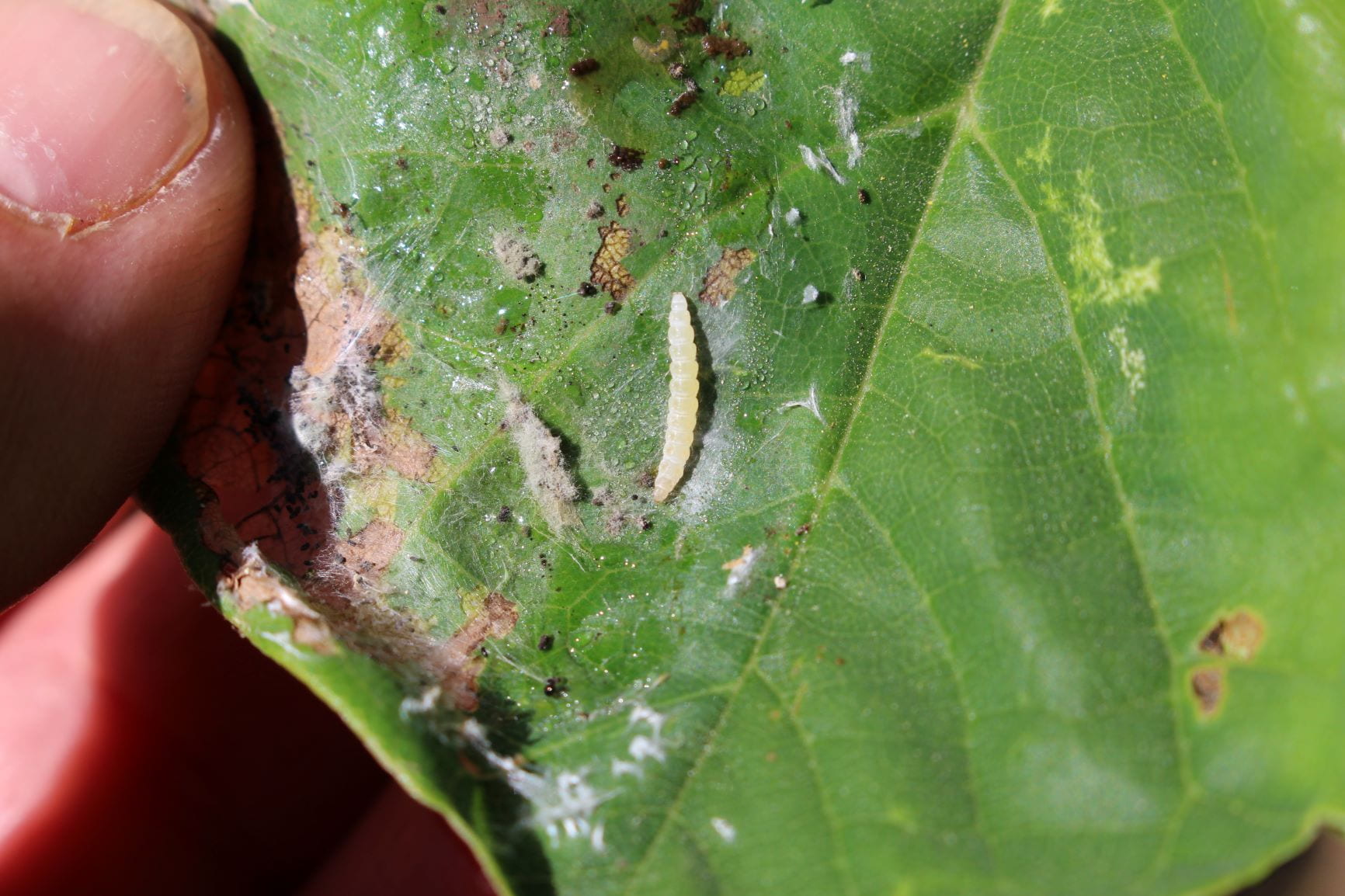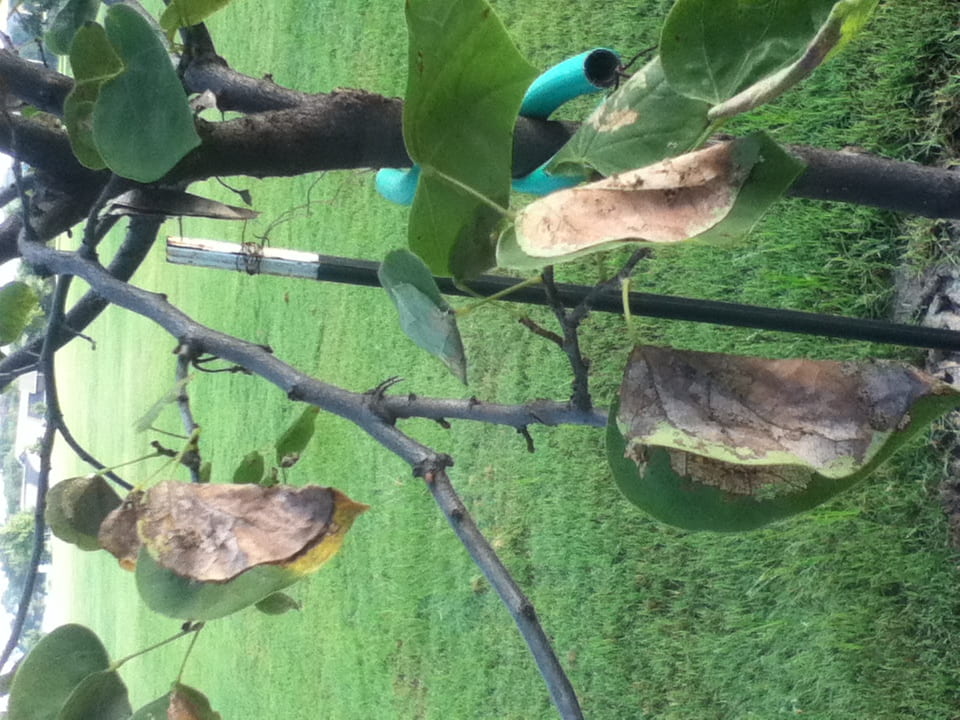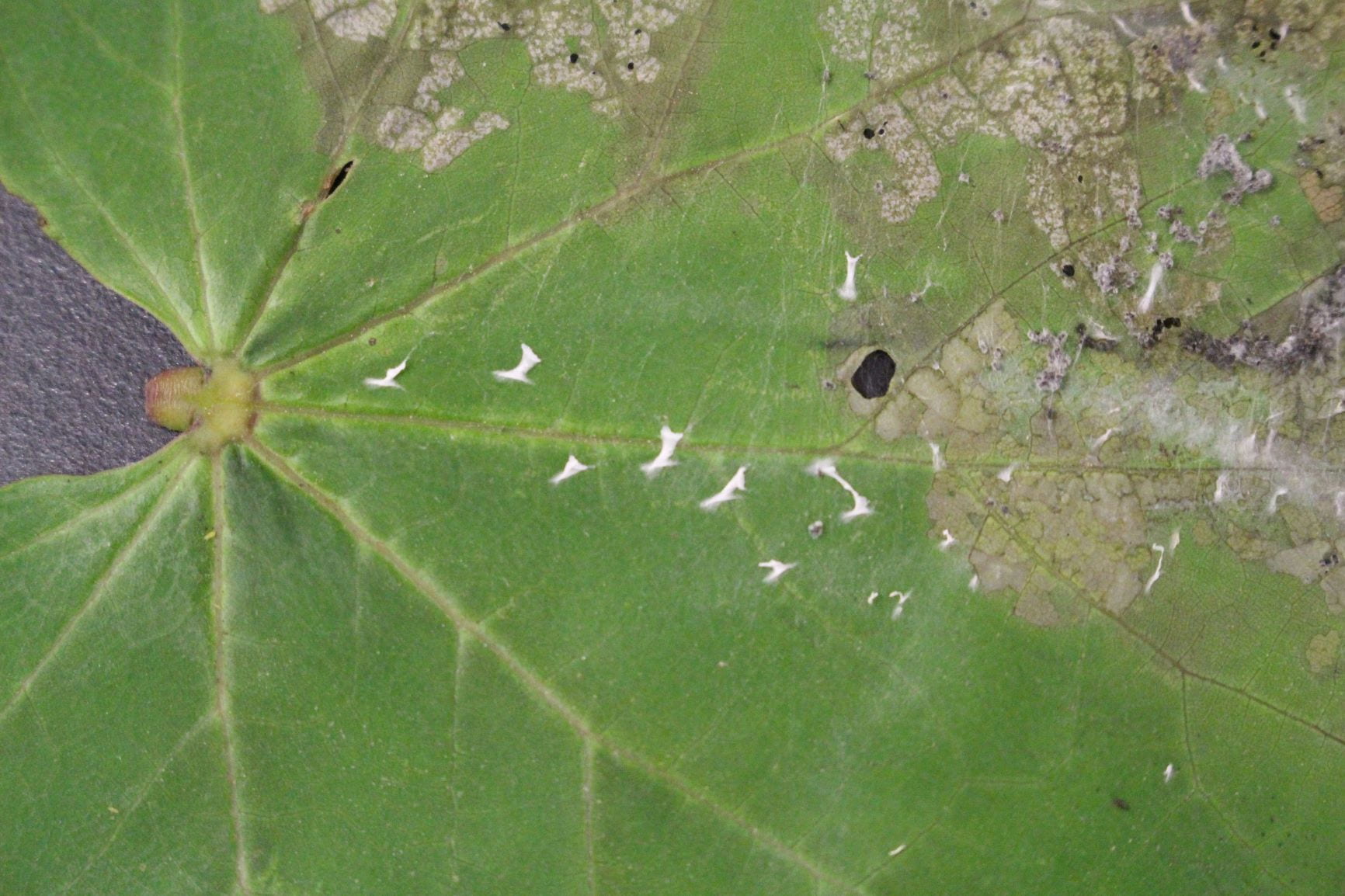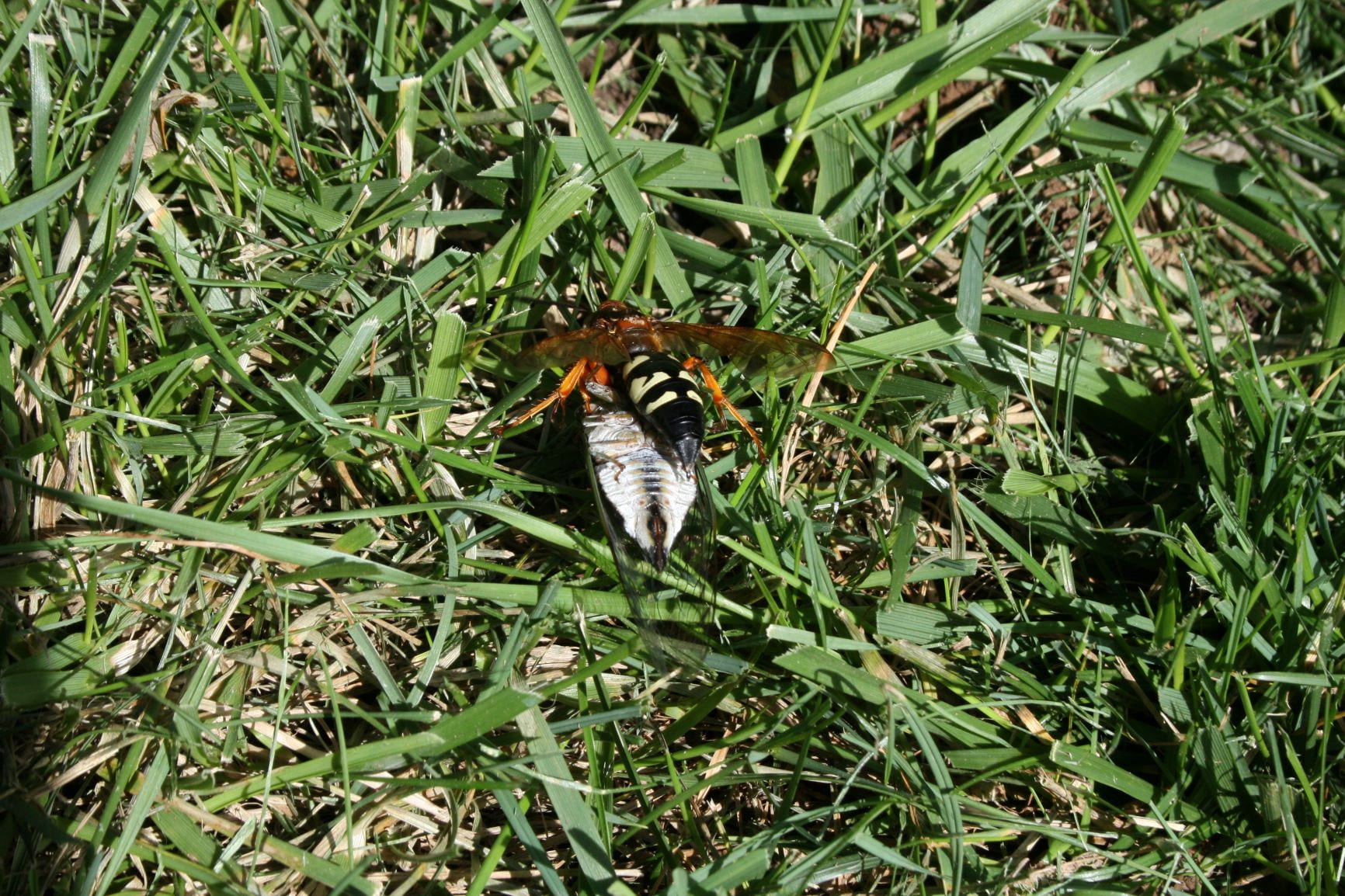–by Raymond Cloyd — Horticultural Entomology
Has anyone noticed the leaves of their Eastern redbud, Cercis canadensis, trees or shrubs turning brown and folding on top of each other? The damage you are noticing is caused by the caterpillar stage of the redbud leaffolder, Fascista cercerisella. Adults are 1/4 inch long, black to dark brown with an orange head. There are approximately 10 white spots on the wings. The adults are very active when disturbed. Adult females lay oval, white eggs near the leaf veins.
Caterpillars emerge (eclose) from the eggs laid by adult females and feed on the leaves of Eastern redbud. Early-instar caterpillars are 1/4 of an inch in length, initially white (Figure 1), and then become light-green. Later-instar caterpillars are 1/2 of an inch long with alternating bands of white and black on the body (Figure 2). Caterpillars fold the edges of leaves onto the upperside (Figure 3) and then fasten the leaves together with white strands of silk (Figure 4). The caterpillars feed within the folds on the upper leaf surface, which protects them from natural enemies such as parasitoids and predators. If you pull the leaves apart the caterpillars will move vigorously and fall off the leaves. Redbud leaffolder overwinters as a pupa in the folds of fallen leaves. There are three generations per year in Kansas.

Figure 1. Early-instar caterpillar of redbud leaffolder (Raymond Cloyd, KSU)

Figure 2. Later-instar caterpillar of redbud leaffolder (Raymond Cloyd, KSU)

Figure 3. Edges of leaves folded onto the leaf upperside (Raymond Cloyd, KSU)

Figure 4. White silken strands that hold leaves together (Raymond Cloyd, KSU)
Eastern redbud trees or shrubs may be disfigured and leaves distorted when leaf margins fold over each other. Heavily-infested Eastern redbud trees or shrubs may drop their leaves prematurely.
Redbud leaffolder caterpillars are difficult to manage with spray applications of insecticides once the leaves are folded over and fastened together because the caterpillars are protected from exposure inside the folded leaves. However, folded leaves can be physically removed and placed into a container of soapy water that will kill redbud leaffolder caterpillars.





